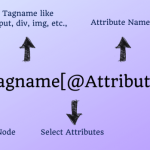
What is HTML?
wp-block-quote">HTML stands for Hyper Text Markup Language. It is a type of standard markup language that is used for creating web pages. It is one of the basic building blocks of the Web. HTML is generally used to describe the meaning and the structure of Web Content and Web Pages.

HTML gives authors the means to publish documents with texts, tables, online pictures, lists, etc. It is a text-based method of clarifying how content retained within an HTML file is structured. It describes the web browsers how to depict text, tables, images, and other forms of multimedia on a webpage.
HTML bounds data within HTML tags, which represent the data and describe its objective on the webpage. HTML can only create static web pages and web applications.
As HTML is a markup language, it can create attractive web pages.
It is made up of several commands and keywords and is used to design websites, web applications, web pages, etc. It is one of the most important tools in Webpages development and creation.
What is HTML used for?

HTML helps the browser to understand the style and structure of a file or document. It provides navigation between different websites and web pages through hyperlinks. It is used by website designers for making web pages, forms, etc.
History of HTML
In the late 1980s, Tim Berners-Lee proposed a system for CERN researchers. In 1989, He composed a message presenting an internet-based hypertext system. Tim Berners-Lee is referred to as the father of HTML. HTML 5 is the latest version of HTML language.
HTML Versions
- HTML 1.0: It was the first version of HTML. It was released in 1991.
- HTML 2.0: It was the next version of the language. It was published in 1995. It was able to support some additional attributes that HTML 1.0 can’t.
- HTML 3.2: It was published by W3C in 1999. HTML version 3.2 can create tables and provide many more extra characteristics as compared to Html 2.0. It is also able to support complex mathematics.
- HTML 4.01: It is relesed on decemnber 1999. It’s a stable version of HTML.
- HTML 5: It is the latest version of HTML language. This version was announced in January 2008.
Features and Advantages of HTML
- It is very easy to use HTML.
- It is very manageable and effective to make presentations using HTML.’
- It provides a flexible form to design web pages.
- It enables programmers to add links to web pages.
- It can be displayed on any platform like Windows, Linux, Unic, etc.
- It also enables programmers to add links, graphics, pictures, videos, sound, etc to the web pages.
- The language is case-sensitive.
- It is available free of cost.
- It is sponsored by all browsers.
- It can easily integrate with other languages.
- The HTML Language is user-friendly.
- It is the basis of all programming languages.
- It is used in front-end development.
- It shows results instantly or immediately.
- It is a lightweight language and it is also faster to download HTML code.
How does HTML work?
An intermediate website also contains several pages like a home page, a content page, an about page, etc.
HTML files and documents end with an extension called .html.
An HTML page has a series of HTML elements that consists of a set of tags and attributes. A tag in HTML shows where an element starts and ends, whereas attributes describe the features of an element.
HTML Tags and Elements
There are 142 HTML tags.
There are two primary elements of HTML. These are Block-level Elements and Inline Elements.
Block-level Elements
A block-level element starts a new line in the documents. For every web page, there are three main HTML tags. These are –
tag is the root element. It represents the HTML document.
Inline Elements
Inline Element structures the inner content of block-level elements like emphasized strings, adding links, etc. These are generally used to format text without ruining the flow of content.
Pros and Cons of HTML
| PROS | CONS |
| It is a beginner-friendly language. | It is only used for making static web pages. |
| It is widely used, with lots of resources. | 2. Users have to create individual web pages even if the elements are the same. |
| It is an open-source language and it is completely free of cost. | 3. Some browsers adopt new features of HTML gradually. |
| It is easily integrable with other languages. | 4. It is not used exclusively. |
Conclusion
HTML is a primary language for website development. It is user-friendly and completely available free of cost. It is mainly used for static website pages. The World Wide Web Consortium maintains and develops HTML, specifications, along with providing regular updates.







